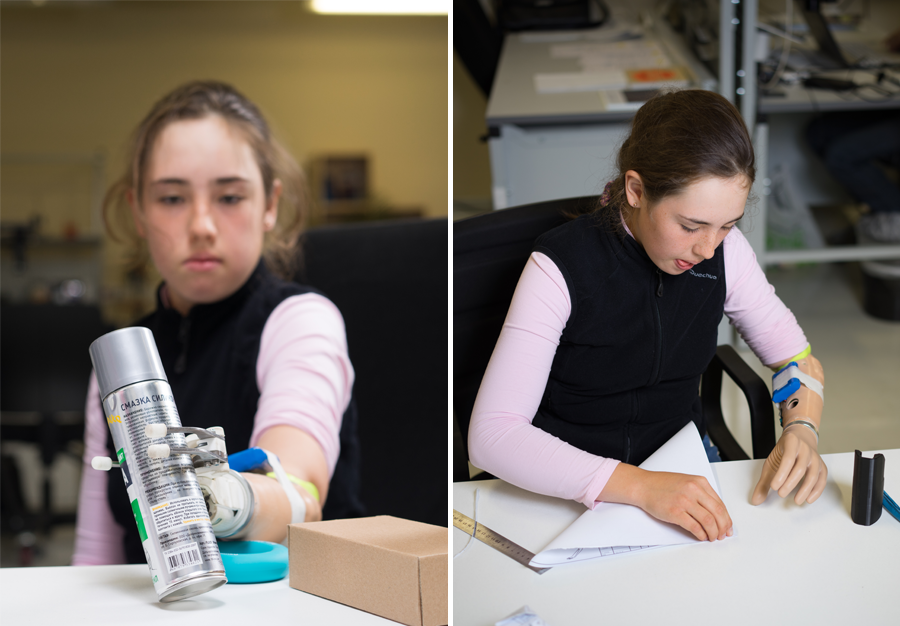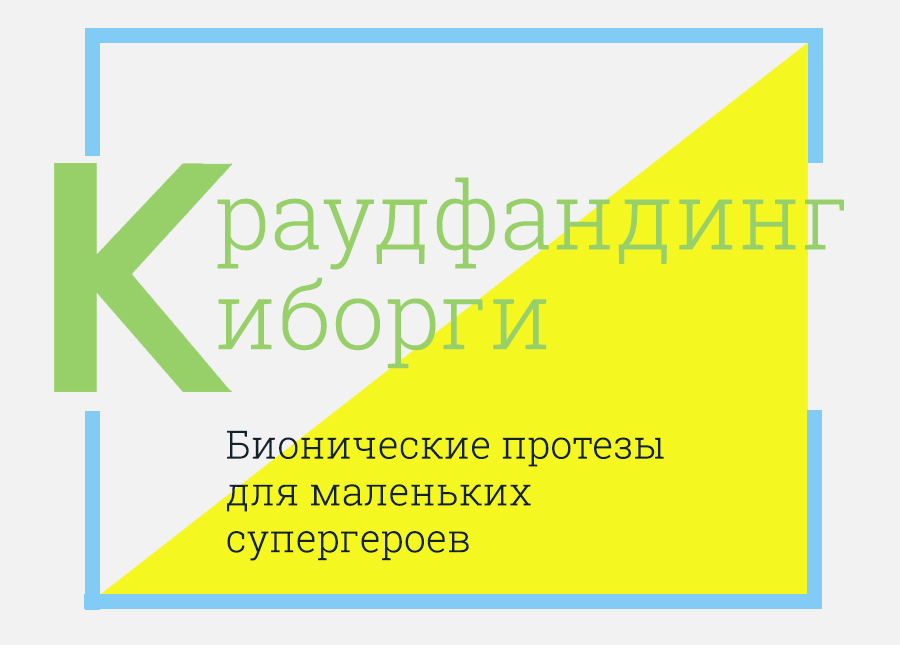Motility: our first bioelectric cyborg
In June 2017, the bionic prosthesis "Stradivari" went beyond the laboratory "Motorika" in Skolkovo and went into the world. Since then, three have already received their first motoric myoelectric devices, but today we’ll tell you about the very first one.
Who was the first cyborg, who saw the light, how the prosthesis coped with the load and how it all turned out - we will tell about it in the article.
Bionic prosthesis "Stradivarius" inside
Creating a modern high-tech product goes through different stages. Our bionics begins history in the summer of 2015, when they discussed the first options of characteristics and prototypes. Gradually, the development gained momentum, calculations and sketches were checked by tests and experiments. Since then, more than 10 prototypes have been released, each time we changed the prosthesis, argued over the design and then checked the solutions. The prototypes were tested by pilots, we received feedback, and started working again. Such a fabulous workflow :)
')
In the current version of the bionic prosthesis, we have designed everything: the mechanical part, housings, gears, gears, electronic components, as well as a special bearing design to reduce the size.
Now in the bionic prosthesis of the Stradivarius arm there are two electromyographic sensors (EMG sensors). They determine the electrical potential that the muscles produce. The information obtained is transmitted to the microprocessor of the brush, then through computer algorithms, it is converted into motor commands. There is a gripper.
Signal definition
For comfortable control of the prosthesis, it is important to quickly and accurately determine the signal that was not possible in the first months of testing.
Every day there were errors. Their cause was difficult to determine: it was necessary to calibrate to minimize the likelihood of errors, solder the wires using a new scheme, change the firmware depending on muscle fatigue, and even raise legs to reduce electrical interference from the floor. This continued on weekdays and on weekends. We tested different ideas, but we could not get a predictable result.
Then, with fresh ideas, the talented student Tanya came to our rescue. We saw our problems from the other side, and solutions began to come faster. About how the signal calibration algorithm was created, we wrote an article “Path from camp robotics to the creator of cyborgs” .
Now we are sure that the signal of different people may differ, its strength and purity depend on the condition and tone of the muscles, and the quality of the soldering must be impeccable. We took the most common signal characteristics and set up the microcontroller firmware for it. The firmware setup went through several debug versions before we eliminated the most likely causes of the crash and made the final version.
Learning a prosthesis: learn, learn and learn again
Each time the power is turned on for the first 2-3 seconds, the prosthesis learns about its geometric dimensions and the location of the end points. This training happens as follows: every time the bionic prosthesis “Stradivarius” is turned on, the motor rotates at low current slowly until it stops. He remembers these data and then works on his own. After shutdown, the data is “forgotten” and the next time it is turned on, everything happens again. What is this training for? In order that the prosthesis does not tear the shell and does not break itself at the extreme points of the trajectory.
Joke, of course)) So it was in the first versions of the firmware. Now the prosthesis will not be able to break the shell and break itself, and the initial calibration is necessary for more efficient power consumption and adjustment of the temperature range of work.
Power supply and prosthesis weight
Together with the battery, the mass of the entire module is 1101 g. The final mass of the prosthesis depends on the length of the arm stump, the shape and size of the other arm, and the proportions of the user's hands.
One of the advantages of our bionics is a rational combination of mass, size and duration of work. We try to make our prosthesis convenient to use, so our battery can be recharged as needed, and not wait until it is completely discharged. One of our users did just that: during the day he used a prosthesis, and in the evening he put it on recharging at home - such a power supply mode does not harm the battery.

The weight of the finished bioelectric prosthesis hands "Stradivari" with battery
In the laboratory test modes, our prosthesis works for at least 2500 full compression / decompression cycles on a single charge. In other words, a prosthesis can, for example, shift parts on a conveyor for 16 hours in a row. In actual operation, our prosthesis works on a single charge for about 3 days, that is, on weekends you can leave lightly without charging, especially going to the bar, not being afraid to come home with a mug in an open arm (and users have such cases). And if you forgot to turn off the prosthesis, then after a week of sadness and sadness without a user, the prosthesis will retain charge and performance.
Our first cyborg
We are proud not only of our team of developers, but also of our cyborg pilots. The very first was Furkat - this is the first user of the Stradivarih bioelectric prosthesis, who left our laboratory as a real cyborg!
To install the prosthesis, a cultured sleeve is necessary. It is made individually in each case and takes into account all the features of the stump. In one visit, such a sleeve could not be made; Furkat came to the prosthetic enterprise three times.
When the cult-receiving sleeve was ready, our engineer conjured it and attached the mechanical and electrical parts of the prosthesis to it. The time and date of installation have been assigned. And now the time has come! For an experienced engineer Fedor Kubyshkin, it was a sleepless night, because the tests were not on his own hands, but on a real user with real-world tasks. Furkat arrived at the laboratory in Skolkovo in the morning, and the process began.
The hand prosthesis is put on the cult-receiving sleeve, it is not necessary to fix it specifically, it is held due to the shape of the hand and the sleeve. The next step was to set up the EMG sensors, and after Furkat began the first training session with the prosthesis. His task was to take and rearrange different objects. At first, he was driven by a prosthesis without a cosmetic shell:
The prosthesis with a cosmetic sheath in action looks like this:
One of the interesting tests in everyday life, which last summer fell to the share of the first prosthesis, was the lawn. More precisely, the lawnmower, which Furkat mowed the lawn. Not without pride, our engineers looked at the result of his work :)

Another important point, which is worth mentioning, is that the bionic prosthetic arm “Stradivarius” users can get for free. How this is done can be read in the guide "How to get a prosthesis for free at the expense of the state . "
The first autumn of cyborg
Installation of the prosthetic brush, we spent the summer. From the first version of the structuring the right decisions were made, which worked smoothly at Furkat. Already in October, on our own initiative, we conducted a technical inspection of the prosthesis and updated the mechanics and electronics: the version of the mechanics was updated to the fourth, and the version of the firmware to the ninth. On the prosthesis, there are buttons that activate the grip and finger release, are used to diagnose problems and during the period of training to use the prosthesis. In one of the recent meetings, Furkat said that he would not mind if we removed them, he would have enough EMG sensors to control the prosthesis. He now uses the prosthesis for several hours a day and is pleased with his work.
We, too. But we will continue to improve the "stuffing" and the possibilities of the prosthesis: we have established such an order that a new version of the firmware appears every month, and the mechanics receive an upgrade every 2-3 months. In our plans to improve its resistance to static loads - hang on it, lean, etc., increase the number of claws. In general, there is more to improve!
While the article was being prepared, our laboratory worked on another pair of cyborgs - the girl Zalia and Gennady.

Zalia, Tester of the First Bionic Prosthesis for Teens

Gennady from Kazakhstan. Cyborg, which received a driver's license
Having teamed up with Alfa-Bank, we taught the prosthesis to pay bills, or rather to pay in stores and public transport with one touch. Our test pilot and comrade Sergey will show how this happens:
In the meantime, in the laboratory, in the special cabinet, there are other dentures of the hands and they are waiting to make someone's life more technologically and better.

The first children's bionic prosthesis
Now we have launched a crowdfunding campaign. Her goal is to create bioelectric prostheses for little superheroes. While in the world there are no available children's prostheses, but we can fix it. Yes, and yours, if you join us, whether you make a contribution or share a link to the campaign “Motility - Bionic Prostheses for Little Superheroes” - both of these options will be beneficial!

Support the project
Source: https://habr.com/ru/post/373971/
All Articles